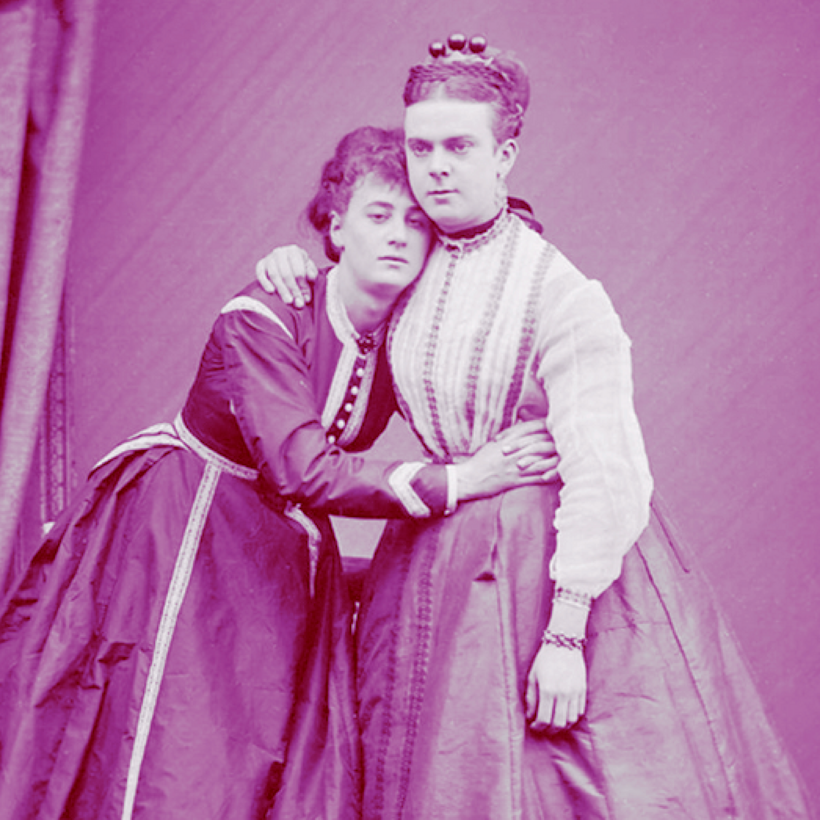When I first started conducting the research that formed the basis of my book, Drag: A British History, my assumption was that I would mostly be investigating niche renderings of an art form shunned by the mainstream due to its association with homosexuality. What I soon found out was that, when drag was associated with sexuality, it was not always considered taboo. In fact, the sexual aspects of drag could fascinate and even turn on audiences, including mainstream, “respectable”—even heterosexual—people.
Take, for example, a letter submitted to and published in the Victorian newspaper London Society in 1893. In it, a correspondent, implied to be male, retrospectively pores over the body of a female impersonator (historically, the common term for a male drag artist) that he had allegedly seen: “The bust and hips were accentuated by the marvelous slimness of the waist, whilst the shapely limbs, clad in pink tights and gauzy skirts, terminated in a pair of ankles and feet that would have put to shame many a fashionable dame.”
Dublin, as the correspondent called himself, went on to allege that he was invited to the female impersonator’s dressing room, where he saw the performer partially undressed in “a cream satin corset, laced painfully tight … the demurest of black stockings and white lace underwear.” Dublin was then purportedly invited to inspect the female impersonator’s wardrobe, which included “every article of feminine underwear of the most diaphanous nature,” while the performer took off his cloak, allowing Dublin to ogle more of his body. Dublin’s letter reads as partial or entire sexual fantasy rather than as a retelling of a genuine event. Its truthfulness aside, the letter suggests that drag was sexually tantalizing to at least a portion of observers.
Reviews for the interwar theatricals of Les Rouges et Noirs, a troupe of First World War ex-servicemen who performed in drag, suggest that critics were enamored with the performers’ wiles and bodies. The Brighton Standard remarked that one member of the ensemble “achieves a wonderful sexual transition, complete in all its details, down to the white-powdered arms and polished manicured finger-nails, the dainty gestures and the positively pretty little affectations of femininity.” “Little captivating tricks that come unconsciously to the girl who has always been one,” added London Opinion, “are copied with excruciating fidelity by the temporary ladies of the company.”
Drag was sexually tantalizing to at least a portion of observers.
Then there were observers who did not necessarily see drag as an outright turn-on but for whom it represented a racy, sexually charged experience. Take, for example, the “Pansy Craze” of the 1920s and early 1930s, when the fad among modish New York City clubgoers was to attend shows featuring effeminate male performers exhibiting camp behavior. A chief appeal of the Pansy Craze was the thrill of engaging, in a limited way, with the contemporary pansy subculture. In particular, it was a sign of sophistication to be au fait with its colloquialisms.
Mainstream periodicals such as the American magazine People Today printed “homosexual glossar[ies],” with definitions of words and phrases like “camp” and “to go in drag” for the benefit of straight readers. A visitor to the 1958 drag show We’re No Ladies, at the Twentieth Century Theatre in London, reported that the “most respectable” crowd at the theater one night laughed at the line “It’s camp all right,” leading the observer to note that the audience “must thus be more familiar with the phraseology of the perverted than appeared.”
Women in drag have also been historically fetishized. Despite pantomime’s reputation as children’s entertainment, the role of the principal boy, traditionally a young male character played by a woman, was often blatantly sexualized by adult male audience members. A newspaper profile of Joan Danson, principal boy in the 1955–56 production of the panto Robinson Crusoe, at Norwich’s Theatre Royal, started with a description of the performer’s measurements: “Auburn-haired, blue-eyed, trim-figured (height five feet seven inches; bust 34 inches; waist 24 inches; hips 36 inches; weight, eight stone seven pounds).” Another article on Danson described “an elegant Robinson Crusoe in a skimpy, but highly becoming, fur tunic.”
In his 1974 Cosmopolitan article “Women in Drag: Not a Fetish but a Turn On,” theater critic Nicholas de Jongh observed that “women, as Virginia Woolf realised in Orlando, become more attractive and more feminine when dressed in men’s clothes…. Girls in men’s gear assimilate the trim neatness of the young man while losing none of their womanliness.”
This is not to say that drag has been solely associated with sexuality. Indeed, Drag: A British History argues that it has historically been linked to concepts that had no immediate connection to sexuality, such as working-class culture, relief from the trauma of war, timeworn theatrical heritage, and, yes, family-friendly entertainment. In their present-day crusade against drag, conservative politicians, commentators, and activists have framed drag’s relationship to sexuality as an odious feature of the art form. Drag supporters should highlight that drag is a diverse medium that can be suitable for a wide range of audience members. Yet it would be a shame if we overcorrected and sanitized drag. The art form has long been a way for adults (as both practitioners and audience members) to express and consider sexuality, and that tradition should continue as part of the broader spectrum of drag.

Jacob Bloomfield’s Drag: A British History is out now from the University of California Press


